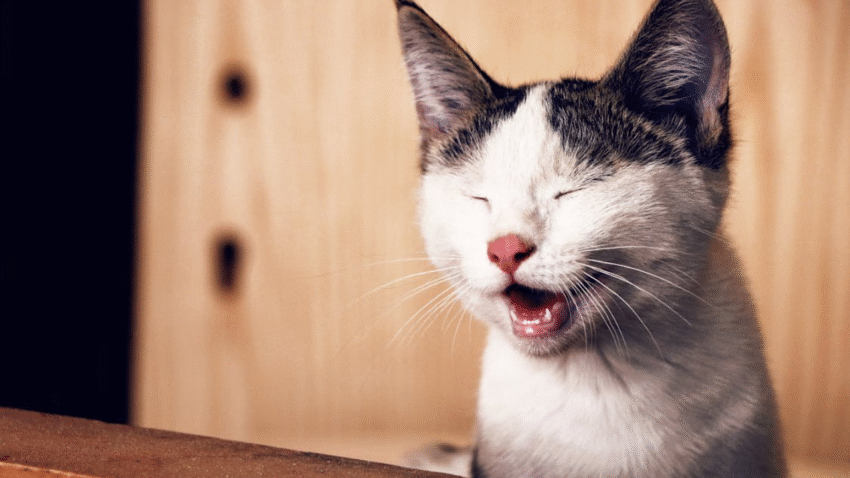Introduction
As your cat enters their senior years, their dietary needs begin to change. Feeding your senior cat properly is one of the most powerful ways to support their health, manage age-related issues, and increase longevity. In this guide, you’ll learn how to feed your senior cat for better health—covering what to look for in food, how to adjust portions, and the best tips for managing appetite, weight, and hydration.
If your furry friend is 7 years or older, now is the time to revisit their nutrition strategy.
Why Senior Cat Nutrition Matters
Older cats often face changes in metabolism, digestion, and muscle mass. Without the right diet, these changes can accelerate aging or worsen health problems.
Here’s why proper feeding matters:
- Supports joint, kidney, and digestive health
- Helps maintain lean muscle mass
- Reduces risk of chronic conditions like diabetes or obesity
- Improves energy, coat quality, and mood
- Extends lifespan and quality of life
Good nutrition is one of the most impactful gifts you can give your aging cat.
Step-by-Step Guide to Feeding a Senior Cat
Follow this process to give your older cat the nutrients and care they need as they age.
1. Understand the Changes That Come With Age
As cats grow older (typically 7+ years), their bodies change in key ways:
- Slower metabolism means they may gain weight on the same food
- Decreased absorption of nutrients like protein and B vitamins
- Muscle loss (sarcopenia) is common in senior cats
- Dental issues may make dry food harder to eat
- Reduced thirst drive increases risk of dehydration
A senior-appropriate diet addresses these changes directly.
2. Choose a Senior-Specific Cat Food
- Look for food labeled “senior” or for cats 7+ or 11+ years depending on your cat’s age and condition.
- Key nutrients to prioritize:
- High-quality protein to maintain muscle
- Lower fat and calories if your cat is less active
- Added omega-3s (from fish oil) for joint and brain support
- Taurine and antioxidants to support heart and immune health
- Probiotics and fiber for digestion
- Wet food is often preferred for seniors—it’s easier to chew and helps with hydration.
Talk to your vet about prescription or specialized diets for conditions like kidney disease or arthritis.
3. Feed Small, Frequent Meals
- Split meals into 2–4 feedings per day instead of one large serving.
- Older cats often have smaller appetites and do better with smaller portions.
- Warming food slightly can increase palatability and smell, encouraging picky eaters.
💡 Tip: If your cat grazes or walks away mid-meal, leave food out for only 20–30 minutes to avoid spoilage or overeating.
4. Monitor Weight and Body Condition
Weight loss in older cats can signal serious problems, while weight gain may worsen joint and organ stress.
- Weigh your cat monthly using a baby or pet scale.
- Check their Body Condition Score (BCS):
- Can you feel ribs easily without excess fat?
- Is there a visible waist when viewed from above?
Regular tracking helps detect early signs of trouble.
5. Support Hydration
Senior cats often don’t drink enough water, leading to kidney strain and urinary issues.
To help:
- Feed wet food regularly (or fully switch from dry)
- Provide multiple water bowls around the home
- Try fountain-style water dispensers to encourage drinking
- Add water or low-sodium broth to meals for extra moisture
Hydration is especially critical for cats with kidney disease or urinary problems.
6. Consider Supplements (With Vet Guidance)
Some cats benefit from extra nutrients not always present in food:
- Omega-3 fatty acids for joint and cognitive support
- Glucosamine and chondroitin for arthritis relief
- Digestive enzymes or probiotics for gut health
- Vitamin B12 injections for absorption issues in aging cats
Always consult your vet before adding supplements to your cat’s diet.
Common Mistakes to Avoid
Avoid these common feeding mistakes with senior cats:
- Feeding the same food as when they were younger
➤ Their metabolism and needs have changed—so should their diet. - Overfeeding or free-feeding
➤ Older cats tend to gain weight more easily if left unsupervised. - Ignoring dental issues
➤ If your cat avoids food or only licks it, they may have tooth pain. Soft or wet food may help. - Skipping vet visits
➤ Weight loss or changes in appetite may be a sign of illness, not just aging. - Feeding treats with no nutritional value
➤ Treats should be functional (like hairball control or joint support) or kept to a minimum.
Extra Tips & Recommendations
Here are a few additional ways to support your senior cat’s diet and overall health:
- Warm food slightly in the microwave to enhance aroma and encourage eating.
- Use shallow or elevated bowls to ease joint discomfort during meals.
- Track appetite changes and inform your vet of anything unusual.
- Stay consistent with feeding routines to reduce stress and confusion.
Want more feeding support? Check out our article How to Feed Your Cat on a Consistent Daily Schedule for more helpful strategies.
Conclusion
Feeding your senior cat for better health and longevity is all about adapting to their changing needs. By offering nutrient-rich food, encouraging hydration, and monitoring their health closely, you can give your older cat the best chance at a long, comfortable, and happy life.
🐾 Your senior cat has given you years of love—return the favor with the right nutrition and care in every meal.
